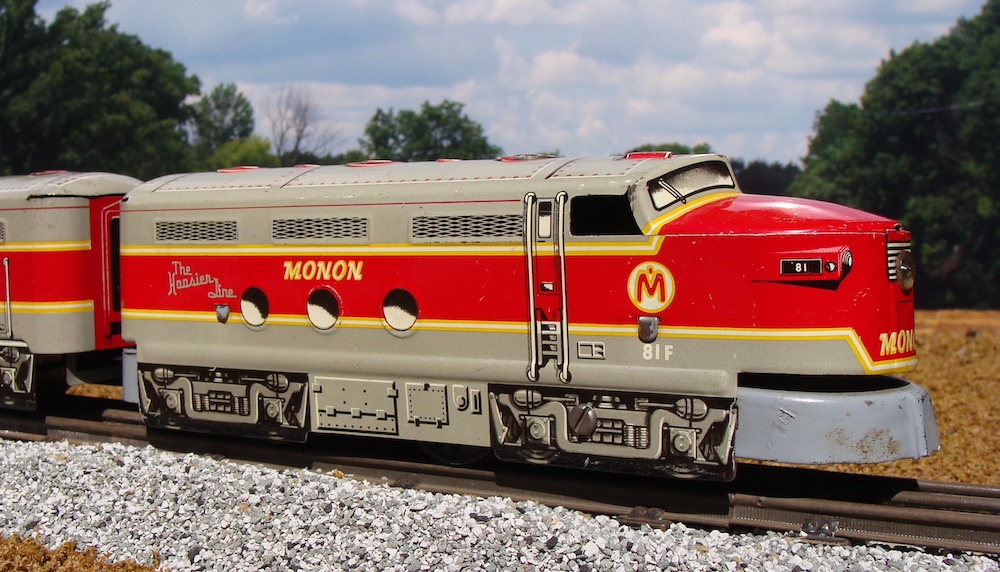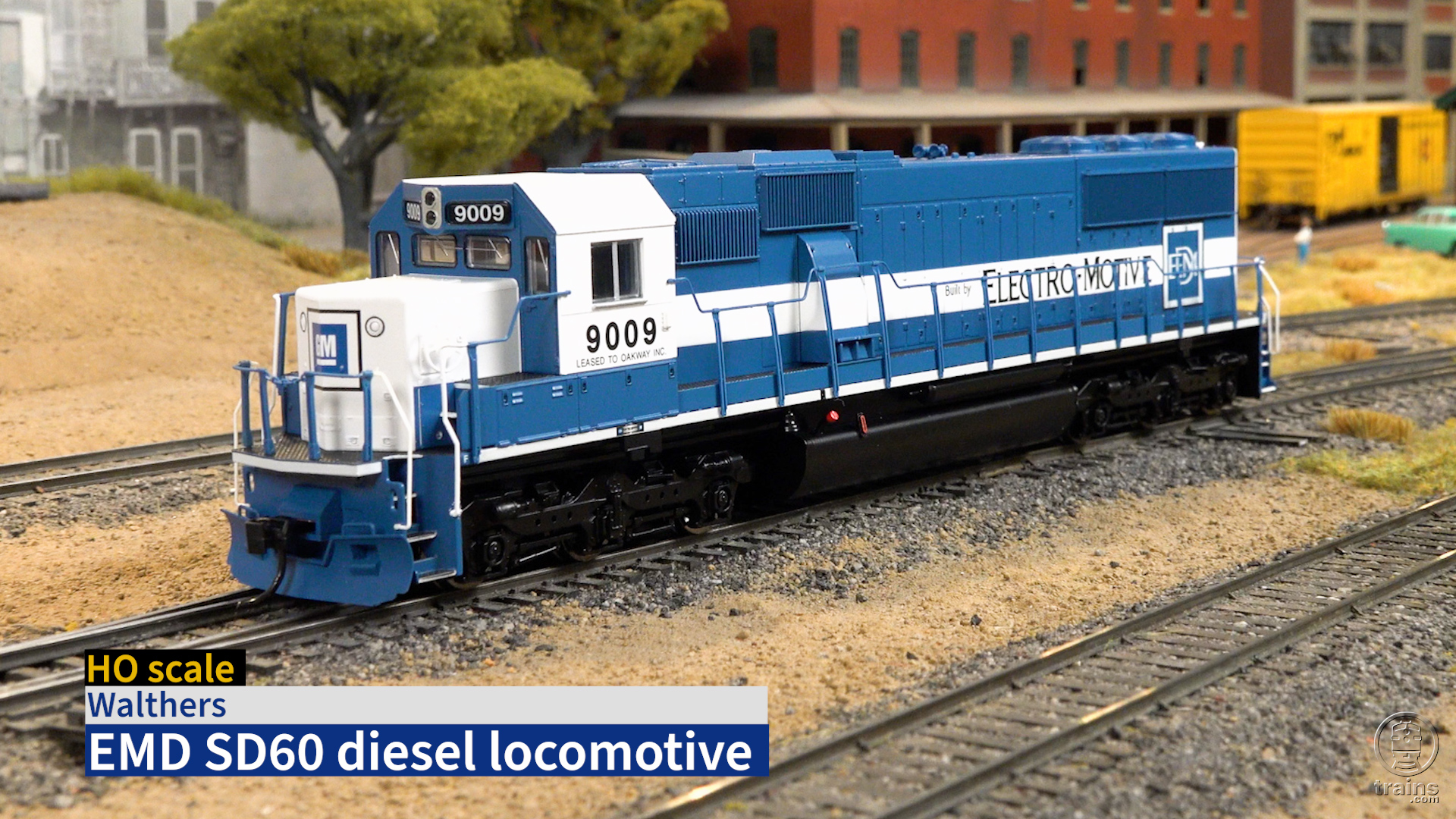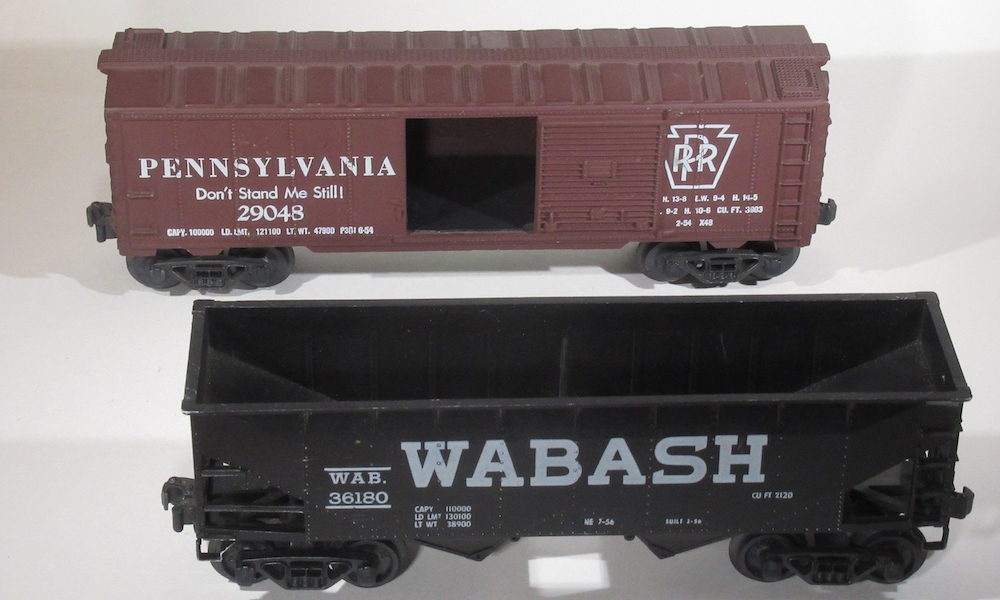A jigsaw is a handy tool for building model railroad benchwork. Follow managing editor David Popp as he gives you tips for making straight cuts when using a jigsaw for layout benchwork.
Making straight cuts for benchwork
| Last updated on May 5, 2021














showing more Woodworkshow to make risersand making the woodwork right from the beginning
I have done a lot of woodwork, my layout, and many other projects. If your going to build a layout out of wood, there are two power tools that are essential!
Get a small chop saw, and a circular table saw. I have a radial arm saw, but recently bought a a small chop saw, I think the blade size is somewhere around 7 1/2, or 8″ Really a nice little saw will slice through a 2X4 like butter, and it came with a carbide blade. It’s portable, where the radial arm saw is not.
The table saw was bought at Harbor freight, Yes I know, don’t say it! But this was easy to carry around.
Of course you still need a good jig saw, and a couple of drill motors. Other tools are helpful, like a band saw, but these are the essentials. Trying to build a model layout without these tools is like eating a tough steak with with a plastic knife and fork!
Just wrong to use jig saw for this, too much side play, small circular saws are cheap these days and use the same 18 volt batteries as your drill setup if that is the way you want to go, in fact they are so good I haven't brought out my real circular saw in over 10 years including a bunch of 1-1 construction.
Very good hints in this Benchwork section of MR Video plus. Thanks for share them with us.
I recently subscribed to the magazine and I am really looking forward to starting work on my layout. These videos are really helping take the edge off of starting this project. Especially this one since woodworking isn't really my forte'. Thanks.
I can count on you guys to always bring good helpful and useful tips that make building a model railroad fun. Keep up the good work.
A very interesting description, thanks
This was a great demo! I love these kind of helpful hints. Please keep up the good work!
Good demonstration of easy techniques. Thanks.
Great advice and a great video. One additional thought. The blade on the jig saw isn't always placed exactly symmetrically on the saw. So, the measurement for using the right side against the clamped ersatz fence may not be correct for using the left side.
David Popp's demonstrations and Cory Grivino's new product
display's are both highlights! Thanks a batch!
Depending on the noise of some saws beside eye protection also wear ear protection!
Another easy to follow, useful tip on using tools. While these easier tips may seem like a "no brainer" to some, collectively they form a fantastic resource for any model railroader. Thanks again David!
As an experienced carpenter and woodworker I must comment on David Davis' recommendation on supporting the flying end of a piece being cut using a helper. This is a strict no-no as it will undoubtedly cause the saw blade to bind potentially resulting in injury to either the saw operator or the person holding the flying end. If support is needed, make certain that both sides of the board being cut are in the exact same plain as exists when using a table saw and again, do not restrain the flying end while cutting. This is true for jig saws, sawzalls and circular saws as well as hand saws. As always, where safety glasses and use adequate lighting when cutting material.
Excellent!
Great demo. Sure beats carrying the wood back to the shop area to use the chop or table saw. That must have been a super blade or you were cutting balsa wood!
Been a model railroader for more years than I can count, and have cut my share of lumber for layouts. Never thought of something so simple but great.Thanks David.
When cutting the Masonite, clamping timber beyond its ends caused the timber to arch up midway along the cut. Unlike yours, my jig-saw has shallow plate sides that might slip into that gap. To avoid this I have found it better to clamp directly above the work itself, a little more tricky – but there is no arching up.
When appropriate a chop saw is safer than a jig-saw. Even so – please wear goggles – always.
And just for you David – A few years ago one of my daughters, who has children of her own, asked for a jigsaw for her birthday. We gave her one with 900 pieces – what did she want? One with 900 W!
Excellent choice of Saws. I thought it was informative and no need for a couple of saws laying around to trip over.
Very good demonstration. Thanks for the tips.
Nice video, Dave. ,,, I see two other issues.
First, make a decision whether to cut outside the line, on the line, or inside the line. It depends on circumstances of course, but I doubt that cutting ON the line in the hardboard illustration will give you exactly two inches. Usually it doesn't matter if you cut all the same.
Second, when you finished your rip, you held the end nearest you to keep the saw from binding and to keep your stock from splitting. That's harder to do for a longer piece, or if you are cutting on already existing benchwork. For me, it's good to have a buddy, or a clamp, ready to hold the "near" end after the rip is a third to a half done, again depending on circumstances.
I've used jigsaws for years and I still learned something from this video. Thanks
This is an excellent tip, & I would like to downloadthe clip to a c.d. Is this Possible
Good start for basic woodworking. Fear of making a mistake is not a reason not to try.
What a helpful video – thanks!